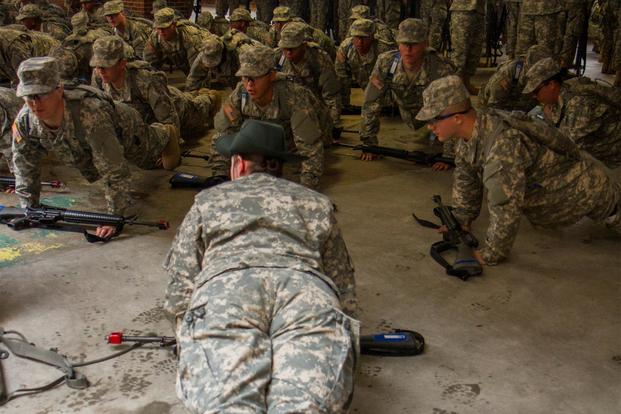Army recruits from 10 Southern states are the most unfit and prone to injury in training compared to other regions of the country, according to a new study.
The study finds that recruits from Alabama, Arkansas, Florida, Georgia, Louisiana, Mississippi, North Carolina, South Carolina, Tennessee and Texas "are significantly less fit, and consequently are more likely to encounter training-related injuries [TRI] than recruits from other U.S. states."
Although the South is the top recruiting region, the study, based on U.S. Army data, shows that "male and female soldiers coming from these states are 22 to 28 percent more likely to be injured" in training.
The study was released by the Citadel, the military school in Charleston, South Carolina, in collaboration with the U.S. Army Public Health Center and the American Heart Association.
"Our results suggest that the [Southern] states identified here pose a greater threat to military readiness than do other states," the study says.
"Each recruit lost to injury has been estimated to cost the Department of Defense approximately $31,000," says the study, published Jan. 10 by the Journal of Public Health Management and Practice.
A Citadel release said the study is the result of a four-year effort led by Citadel Health, Exercise, and Sport Science professor Daniel Bornstein, Ph.D.
Other participants in the study include: Laurie Whitsel, Ph.D., of the American Heart Association; and Keith Hauret and Bruce Jones, M.D., of the U.S. Army Public Health Center. Participants from the University of South Carolina include George Grieve; Morgan Clennin; Alexander McLain, Ph.D.; Michael Beets, Ph.D.; and Mark Sarzynski, Ph.D.
"It is our hope that the states identified through this analysis, along with federal entities, work to establish policies and environments proven to support physically active lifestyles," Bornstein said in a statement.
"If such actions were taken, physical fitness levels among residents of these states would rise and each state's disproportionate burden on military readiness and public health could be minimized," he said.
The report says, "Many states in the southern region of the United States are recognized for higher rates of obesity, physical inactivity, and chronic disease. These states are therefore recognized for their disproportionate public health burden."
In addition, the 10 Southern states "are also disproportionately burdensome for military readiness and national security," the report states.
The study notes the presence of "high physical inactivity and obesity prevalence" in the South, and says "physical inactivity and obesity are well recognized among the most critical public health challenges of the 21st century."
The study warns that the overall recruiting pool for the military is dwindling and cites estimates that 27 percent of Americans aged 17-24 are too overweight to qualify for military service, "with obesity being the second-highest disqualifying medical condition between 2010 and 2014."
In comments to the Citadel on the study, retired Army Lt. Gen. Mark Hertling said the findings provide "critical insight into the real national security issues posed by recruits who are less physically fit and less prepared for military service than they have ever been in our history."
"I know firsthand the challenges faced in addressing the fitness levels of our youth after having served as commander of all U.S. Army basic training units," said Hertling, now a CNN analyst.
"While commanding in combat, I saw the effect training-related injuries had on mission accomplishment," and "in basic training, the number of unfit recruits forced changes to our physical training procedures and dining menus," he said.
-- Richard Sisk can be reached at Richard.Sisk@Military.com.












